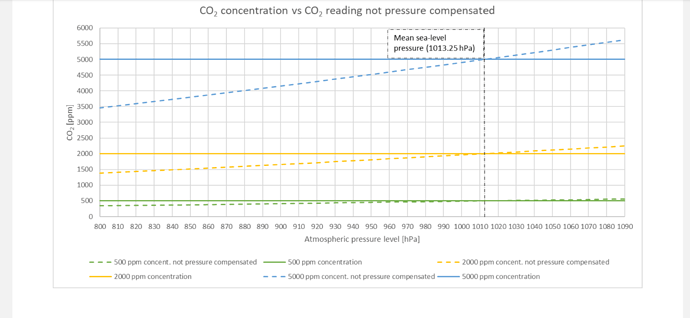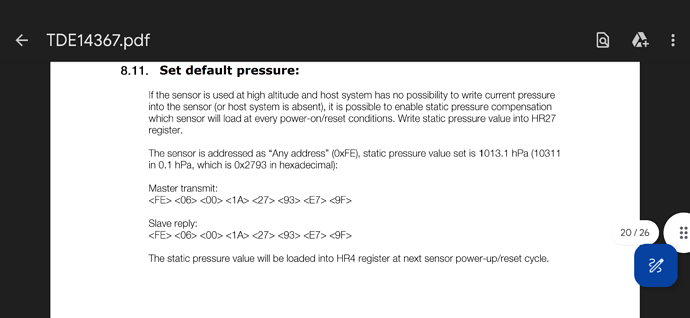Hello,
I’m considering purchasing an Air Gradient One for measuring air quality in my child’s bedroom during the night, and my office during the day (I work from home). I live in a city with high relative humidity throughout the year, and at 800m above sea level.
I’ve been discussing different points around this with @Ethan_AirGradient on the breathe safe air forum. Ethan has been incredibly helpful and openly addressing and explaining every single detail to me.
My latest question, which I’m now bringing here as well, is regarding an altitude compensation for the CO2 sensor readings. I learned about it on the Aranet4 Forum: Altitude compensation
Based on Ethan’s latest reply (Night air quality monitor for child respiratory issues (at high RH) - #6 by Ethan - Air Quality Monitors - BreatheSafeAir Forum) , it seems that the S8 sensor may not have such compensation available off the shelf (or at least it is not explicitly documented), whereas it states to expect deviation of 1.6% per kPA. In my case, I’m under the impression this could lead to 16% deviation then.
I would like to ask if anyone has implemented such altitude compensation for the S8 sensor, either by incorporating a barometric sensor to the device and/or by manually using the known current altitude? I tried to search in the forum with some key words (barometric, pressure, altitude, elevation) but couldn’t find it yet.
Any ideas or suggestions would be appreciated 

